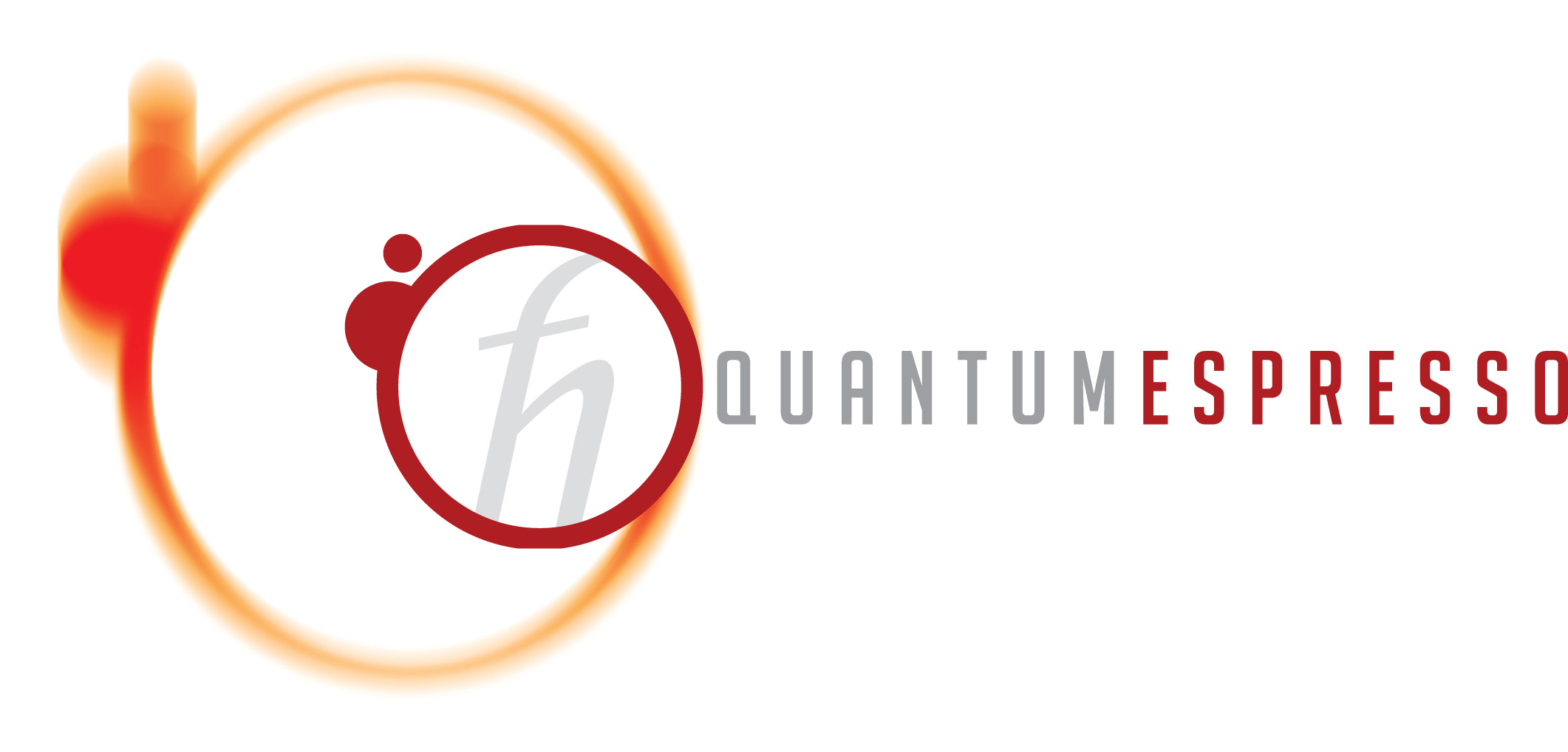Quantum ESPRESSOのNiOの結果を可視化する
Last Update:2025/10/28
NiOの反強磁性の計算を行う。
下記のpw.xの入力ファイルNiO.inを作成する。
&CONTROL
calculation = 'scf'
etot_conv_thr = 4.0000000000d-05
forc_conv_thr = 1.0000000000d-04
outdir = './out/'
prefix = 'nio'
pseudo_dir = './'
tprnfor = .true.
tstress = .true.
/
&SYSTEM
degauss = 2.0000000000d-02
ecutrho = 4.0000000000d+02
ecutwfc = 5.0000000000d+01
ibrav = 0
nat = 4
nosym = .false.
nspin = 2
ntyp = 3
occupations = 'smearing'
smearing = 'cold'
starting_magnetization(1) = 5.0
starting_magnetization(2) = -5.0
starting_magnetization(3) = 0.0
tot_magnetization = 0.0
/
&ELECTRONS
conv_thr = 8.0000000000d-10
electron_maxstep = 80
mixing_beta = 4.0000000000d-01
/
ATOMIC_SPECIES
Ni1 58.6934 ni_pbesol_v1.4.uspp.F.UPF
Ni2 58.6934 ni_pbesol_v1.4.uspp.F.UPF
O 15.9994 O.pbesol-n-kjpaw_psl.0.1.UPF
ATOMIC_POSITIONS crystal
Ni1 0.0000000000 0.0000000000 0.0000000000
Ni2 0.5000000000 0.5000000000 0.5000000000
O 0.2500010000 0.7499990000 0.2499930000
O 0.7499990000 0.2500010000 0.7500070000
K_POINTS automatic
17 17 9 0 0 0
CELL_PARAMETERS angstrom
2.9830770400 0.0000000000 0.0000000000
-1.4914536616 2.5834751934 0.0000000000
1.4915830092 -0.8611884515 4.8640030001
HUBBARD (ortho-atomic)
U Ni1-3d 6.0
U Ni2-3d 6.0次に擬ポテンシャルをダウンロードしたのち、pw.xを実行する。
$ wget https://www.physics.rutgers.edu/gbrv/ni_pbesol_v1.4.uspp.F.UPF
$ wget https://pseudopotentials.quantum-espresso.org/upf_files/O.pbesol-n-kjpaw_psl.0.1.UPF
$ pw.x < NiO.in > NiO.out可視化には、実行結果NiO.outを用いる。
# plot_spin.py
import matplotlib
matplotlib.use('Agg')
import re
import numpy as np
import matplotlib.pyplot as plt
from mpl_toolkits.mplot3d import Axes3D
# --- 設定項目 ---
# Quantum ESPRESSOの出力ファイルへのパスを指定してください
QE_OUTPUT_FILE = 'NiO.out'
OUTPUT_IMAGE_FILE = 'spin_structure.png' # 保存する画像ファイル名
# 描画設定
SPIN_SCALE_FACTOR = 1.8 # スピンの矢印の長さを調整する係数
ATOM_SIZE = 200 # 原子を表す点の大きさ
SPIN_THRESHOLD = 0.1 # この値(Bohr mag)以下の磁化を持つ原子のスピンは表示しない
# 元素ごとの色を定義 (計算に合わせて追加・変更してください)
ELEMENT_COLORS = {
'Ni': 'darkcyan',
'O': 'red',
}
# --- Quantum ESPRESSO出力解析 ---
def parse_qe_output(filepath):
"""
Quantum ESPRESSO (pw.x) のSCF出力ファイルをパースする。
最後の構造と磁化の情報を抽出する。
"""
BOHR_TO_ANGSTROM = 0.529177210903
alat, lattice_vectors_alat, atoms, magnetization = None, [], [], []
try:
with open(filepath, 'r') as f:
lines = f.readlines()
except FileNotFoundError:
raise FileNotFoundError(f"エラー: ファイル '{filepath}' が見つかりません。")
# 構造情報を抽出
alat_line = next((line for line in lines if 'lattice parameter (alat)' in line), None)
if alat_line:
alat_bohr = float(alat_line.split('=')[1].split()[0])
alat = alat_bohr * BOHR_TO_ANGSTROM
axes_start_index = next((i for i, line in enumerate(lines) if 'crystal axes: (cart. coord. in units of alat)' in line), None)
if axes_start_index is not None:
for i in range(1, 4):
line = lines[axes_start_index + i]
vec_part = line.split('=')[1]
vec_str = vec_part.replace('(', '').replace(')', '').strip()
vec = [float(x) for x in vec_str.split()]
lattice_vectors_alat.append(vec)
pos_start_index = next((i for i, line in enumerate(lines) if 'site n. atom positions (alat units)' in line), None)
if pos_start_index is not None:
for i in range(pos_start_index + 1, len(lines)):
line = lines[i]
if 'tau(' in line:
parts = line.split()
element = ''.join(filter(str.isalpha, parts[1]))
coord_part = line.split('=')[1]
coords_str = coord_part.replace('(', '').replace(')', '').strip()
coords_alat = np.array([float(c) for c in coords_str.split()])
atoms.append({'element': element, 'coords_alat': coords_alat})
elif not line.strip():
break
mag_start_index = -1
for i in range(len(lines) - 1, -1, -1): # 後ろからインデックスを探索
if 'Magnetic moment per site' in lines[i]:
mag_start_index = i
break # 最初に見つかった(=ファイルの一番後ろの)セクションで確定
# 見つかった場合、そのセクションを読み込む
if mag_start_index != -1:
for i in range(mag_start_index + 1, len(lines)):
line = lines[i]
if 'atom' in line and 'magn=' in line:
magn_z = float(line.split('magn=')[1].split()[0])
magnetization.append(magn_z)
# 磁化セクションの終わりを判定 (空行または別のセクションの開始)
elif not line.strip() or 'total cpu time' in line:
break # 磁化セクション後の空行などでループを抜ける
# --- データ検証と整形 ---
if not all([alat, lattice_vectors_alat, atoms, magnetization]):
# デバッグ用にどの情報が欠けているかを表示
print("--- デバッグ情報 ---")
print(f"格子定数 (alat) 抽出成功: {'はい' if alat else 'いいえ'}")
print(f"格子ベクトル (lattice_vectors_alat) 抽出成功: {'はい' if lattice_vectors_alat else 'いいえ'}")
print(f"原子座標 (atoms) 抽出成功: {'はい' if atoms else 'いいえ'}")
print(f"磁化 (magnetization) 抽出成功: {'はい' if magnetization else 'いいえ'}")
print("--------------------")
raise ValueError("エラー: 出力ファイルから必要な情報(格子、原子、磁化)をすべて抽出できませんでした。")
if len(atoms) != len(magnetization):
raise ValueError(f"エラー: 原子数({len(atoms)})と磁化の数({len(magnetization)})が一致しません。")
lattice_vectors = np.array(lattice_vectors_alat) * alat
final_atoms = [{'element': atom['element'], 'coords': atom['coords_alat'] * alat} for atom in atoms]
spin_vectors = [[0.0, 0.0, mz] for mz in magnetization]
return {
'lattice_vectors': lattice_vectors,
'atoms': final_atoms,
'spin_vectors': spin_vectors,
}
# --- メインの描画処理 (変更なし) ---
def plot_spin_structure_from_qe(qe_outfile):
try:
data = parse_qe_output(qe_outfile)
except (ValueError, FileNotFoundError) as e:
print(e)
return
fig = plt.figure(figsize=(10, 10))
ax = fig.add_subplot(111, projection='3d')
for i, atom in enumerate(data['atoms']):
x, y, z = atom['coords']
element = atom['element']
color = ELEMENT_COLORS.get(element, 'gray')
ax.scatter([x], [y], [z], s=ATOM_SIZE, c=color, label=element, depthshade=False)
mx, my, mz = data['spin_vectors'][i]
if np.linalg.norm([mx, my, mz]) > SPIN_THRESHOLD:
ax.quiver(x, y, z, mx, my, mz,
length=SPIN_SCALE_FACTOR,
normalize=True,
color='black',
arrow_length_ratio=0.3)
vectors = data['lattice_vectors']
origin = np.array([0,0,0])
corners = [
origin, origin + vectors[0], origin + vectors[1], origin + vectors[2],
origin + vectors[0] + vectors[1], origin + vectors[0] + vectors[2],
origin + vectors[1] + vectors[2], origin + vectors[0] + vectors[1] + vectors[2]
]
edges = [
(0, 1), (0, 2), (0, 3), (1, 4), (1, 5), (2, 4),
(2, 6), (3, 5), (3, 6), (4, 7), (5, 7), (6, 7)
]
for start_idx, end_idx in edges:
p1, p2 = corners[start_idx], corners[end_idx]
ax.plot3D(*zip(p1, p2), color="gray", linestyle='--')
ax.set_xlabel('X (Å)')
ax.set_ylabel('Y (Å)')
ax.set_zlabel('Z (Å)')
ax.set_title('Crystal Structure with Spin Vectors (from Quantum ESPRESSO)')
handles, labels = ax.get_legend_handles_labels()
by_label = dict(zip(labels, handles))
ax.legend(by_label.values(), by_label.keys())
x_lims, y_lims, z_lims = ax.get_xlim(), ax.get_ylim(), ax.get_zlim()
ax.set_box_aspect([lim[1] - lim[0] for lim in [x_lims, y_lims, z_lims]])
ax.set_anchor('C')
plt.savefig(OUTPUT_IMAGE_FILE, dpi=300, bbox_inches='tight')
print(f"画像 '{OUTPUT_IMAGE_FILE}' を保存しました。")
plt.show()
if __name__ == '__main__':
plot_spin_structure_from_qe(QE_OUTPUT_FILE)上記のpythonスクリプト plot_spin.pyを作成し、
pythoh3 plot_spin.pyを実行すると下記の図のspin_structure.pngが作成される。


